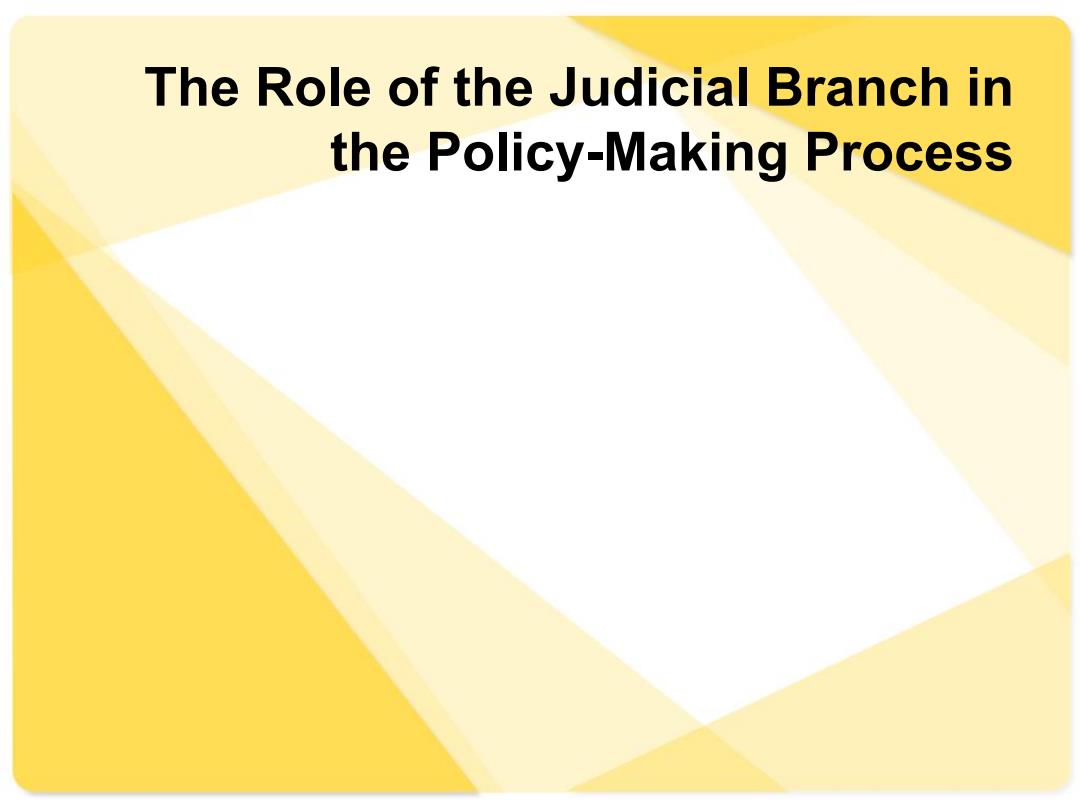
The Role of the Judicial Branch in the Policy-Making Process
The Role of the Judicial Branch in the Policy-Making Process
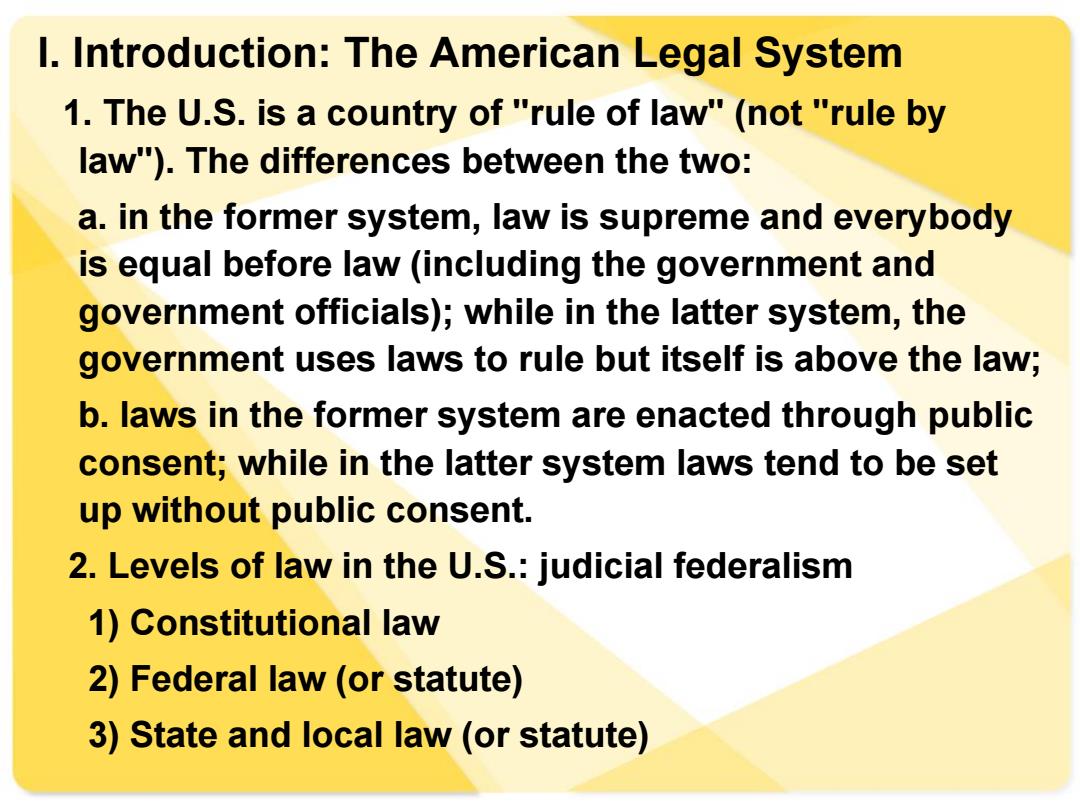
I.Introduction:The American Legal System 1.The U.S.is a country of "rule of law"(not "rule by law").The differences between the two: a.in the former system,law is supreme and everybody is equal before law(including the government and government officials);while in the latter system,the government uses laws to rule but itself is above the law; b.laws in the former system are enacted through public consent;while in the latter system laws tend to be set up without public consent. 2.Levels of law in the U.S.:judicial federalism 1)Constitutional law 2)Federal law (or statute) 3)State and local law (or statute)
I. Introduction: The American Legal System 1. The U.S. is a country of "rule of law" (not "rule by law"). The differences between the two: a. in the former system, law is supreme and everybody is equal before law (including the government and government officials); while in the latter system, the government uses laws to rule but itself is above the law; b. laws in the former system are enacted through public consent; while in the latter system laws tend to be set up without public consent. 2. Levels of law in the U.S.: judicial federalism 1) Constitutional law 2) Federal law (or statute) 3) State and local law (or statute)
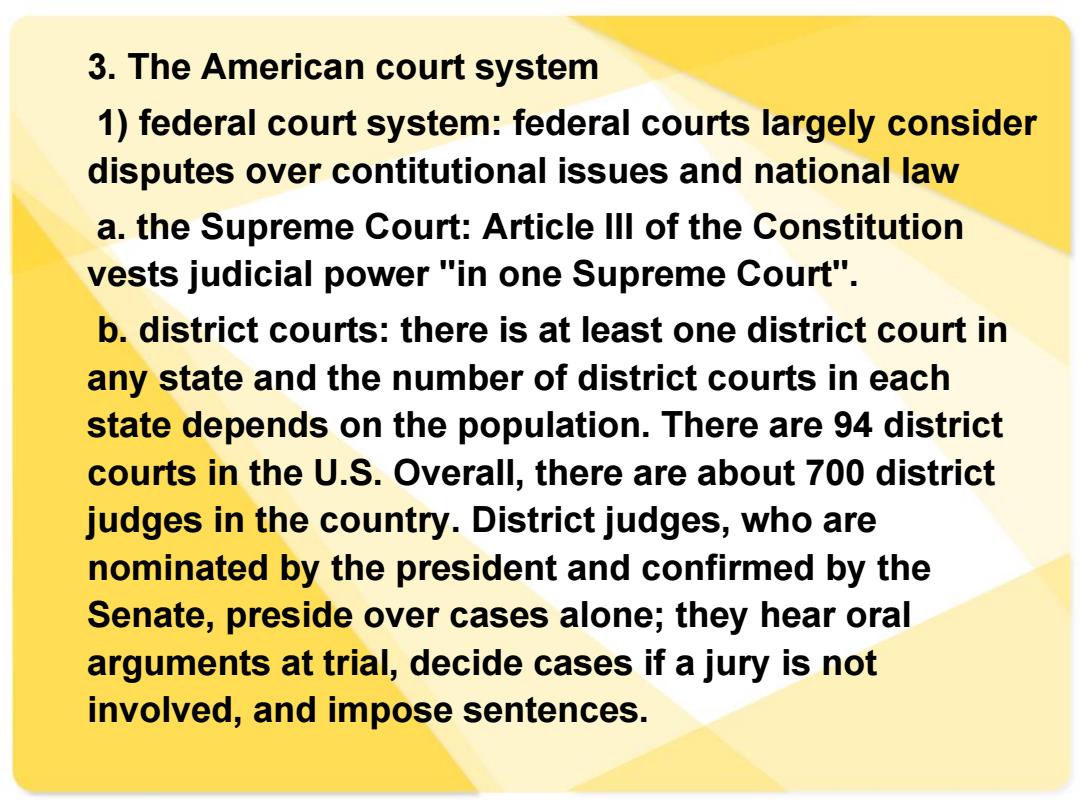
3.The American court system 1)federal court system:federal courts largely consider disputes over contitutional issues and national law a.the Supreme Court:Article lll of the Constitution vests judicial power "in one Supreme Court". b.district courts:there is at least one district court in any state and the number of district courts in each state depends on the population.There are 94 district courts in the U.S.Overall,there are about 700 district judges in the country.District judges,who are nominated by the president and confirmed by the Senate,preside over cases alone;they hear oral arguments at trial,decide cases if a jury is not involved,and impose sentences
3. The American court system 1) federal court system: federal courts largely consider disputes over contitutional issues and national law a. the Supreme Court: Article III of the Constitution vests judicial power "in one Supreme Court". b. district courts: there is at least one district court in any state and the number of district courts in each state depends on the population. There are 94 district courts in the U.S. Overall, there are about 700 district judges in the country. District judges, who are nominated by the president and confirmed by the Senate, preside over cases alone; they hear oral arguments at trial, decide cases if a jury is not involved, and impose sentences
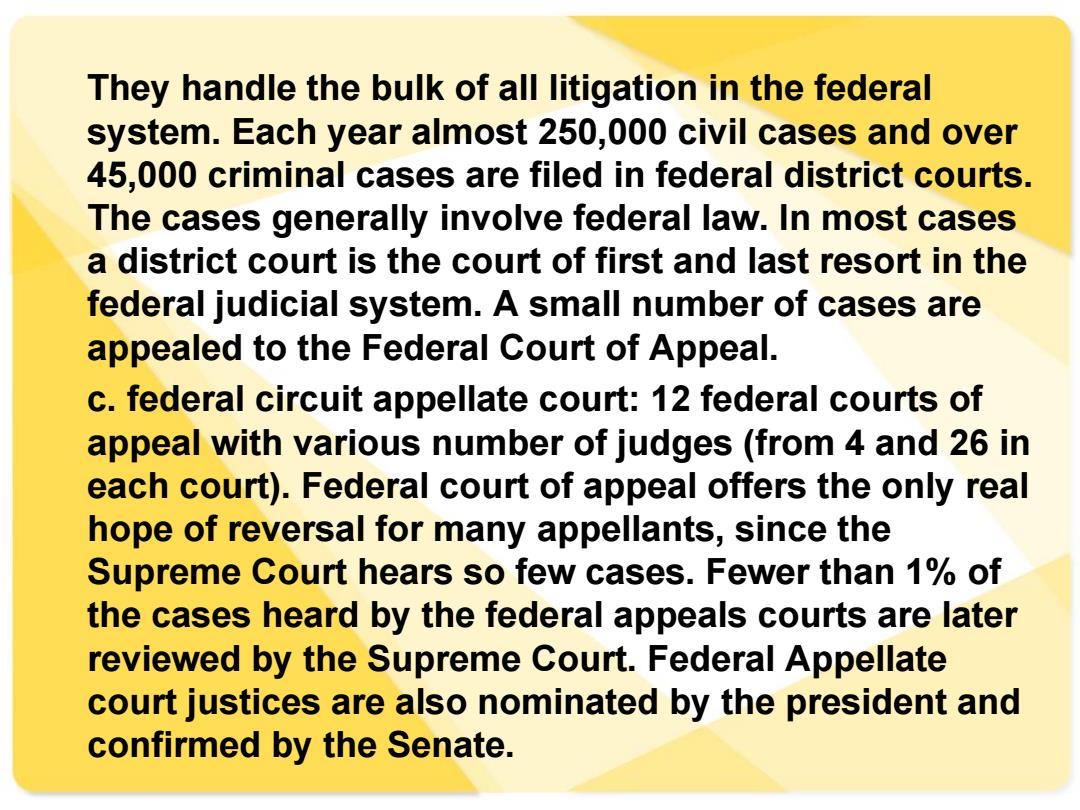
They handle the bulk of all litigation in the federal system.Each year almost 250,000 civil cases and over 45,000 criminal cases are filed in federal district courts. The cases generally involve federal law.In most cases a district court is the court of first and last resort in the federal judicial system.A small number of cases are appealed to the Federal Court of Appeal. c.federal circuit appellate court:12 federal courts of appeal with various number of judges(from 4 and 26 in each court).Federal court of appeal offers the only real hope of reversal for many appellants,since the Supreme Court hears so few cases.Fewer than 1%of the cases heard by the federal appeals courts are later reviewed by the Supreme Court.Federal Appellate court justices are also nominated by the president and confirmed by the Senate
They handle the bulk of all litigation in the federal system. Each year almost 250,000 civil cases and over 45,000 criminal cases are filed in federal district courts. The cases generally involve federal law. In most cases a district court is the court of first and last resort in the federal judicial system. A small number of cases are appealed to the Federal Court of Appeal. c. federal circuit appellate court: 12 federal courts of appeal with various number of judges (from 4 and 26 in each court). Federal court of appeal offers the only real hope of reversal for many appellants, since the Supreme Court hears so few cases. Fewer than 1% of the cases heard by the federal appeals courts are later reviewed by the Supreme Court. Federal Appellate court justices are also nominated by the president and confirmed by the Senate
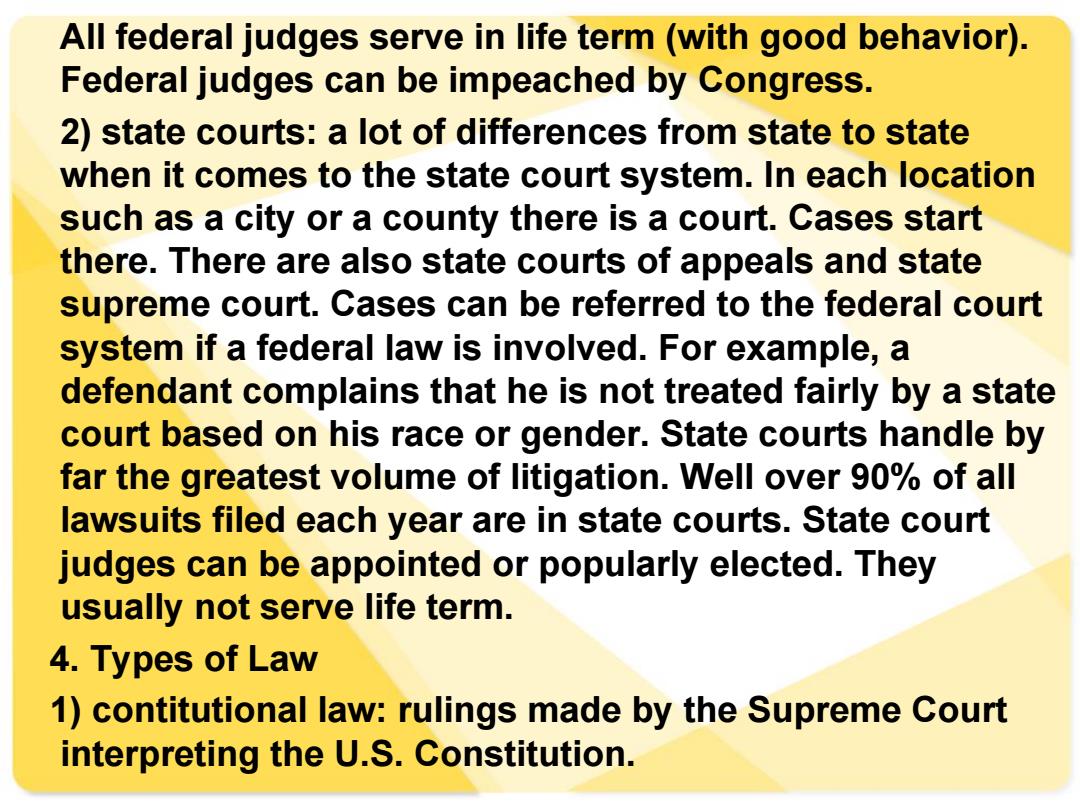
All federal judges serve in life term (with good behavior). Federal judges can be impeached by Congress. 2)state courts:a lot of differences from state to state when it comes to the state court system.In each location such as a city or a county there is a court.Cases start there.There are also state courts of appeals and state supreme court.Cases can be referred to the federal court system if a federal law is involved.For example,a defendant complains that he is not treated fairly by a state court based on his race or gender.State courts handle by far the greatest volume of litigation.Well over 90%of all lawsuits filed each year are in state courts.State court judges can be appointed or popularly elected.They usually not serve life term. 4.Types of Law 1)contitutional law:rulings made by the Supreme Court interpreting the U.S.Constitution
All federal judges serve in life term (with good behavior). Federal judges can be impeached by Congress. 2) state courts: a lot of differences from state to state when it comes to the state court system. In each location such as a city or a county there is a court. Cases start there. There are also state courts of appeals and state supreme court. Cases can be referred to the federal court system if a federal law is involved. For example, a defendant complains that he is not treated fairly by a state court based on his race or gender. State courts handle by far the greatest volume of litigation. Well over 90% of all lawsuits filed each year are in state courts. State court judges can be appointed or popularly elected. They usually not serve life term. 4. Types of Law 1) contitutional law: rulings made by the Supreme Court interpreting the U.S. Constitution